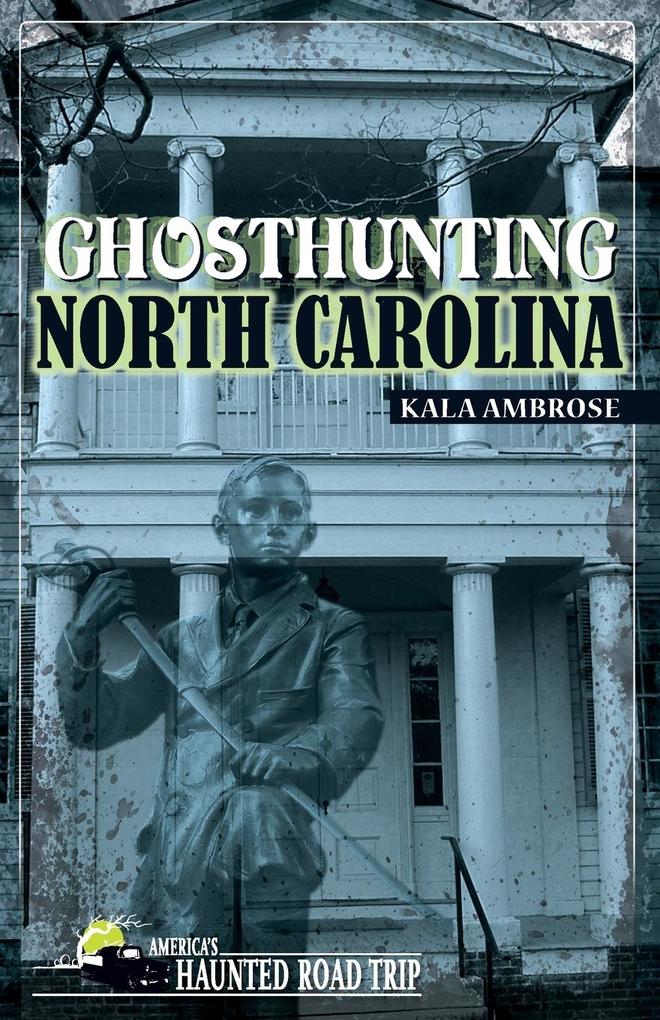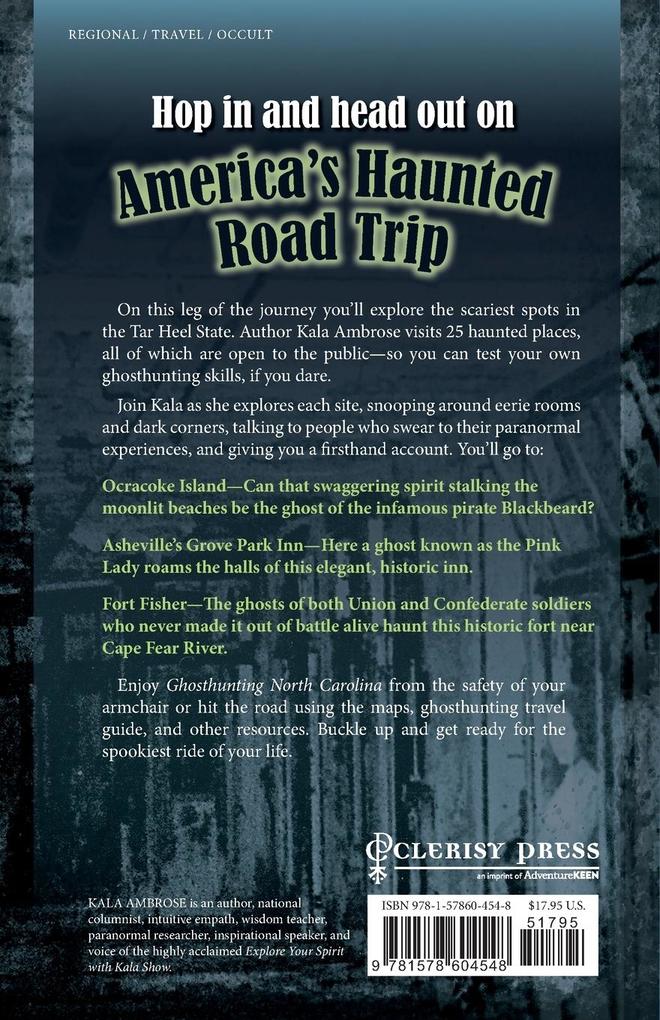Southern Hospitality Extends into the Afterlife at the Blount-Bridgers House
Tarboro
Tarboro was established in 1760 along the Tar River and is located in what is described as the Inner Banks area of North Carolina. Originally it was referred to as Tawboro, taw being a Native American word referring to the river of health.
My favorite part of Tarboro is the historic area, which is a 45-block district with more than 300 residential homes, historic churches, and many nineteenth-century buildings still stand-ing and in use. Tarboro also has a 15-acre park with war memori-als and a town common.
I visited Tarboro in 2010, as the town celebrated its 250th anniversary. The celebration included a variety of events based on the town s history. Driving around the Tarboro historic com-mons, one senses how ripe it must be for ghostly activity. In 1863, 800 Union soldiers engaged in a five-day attack on Green-ville, Tarboro, and Rocky Mount, destroying steamboats and supplies in Tarboro. As we ve already seen in these investiga-tions, the Civil War made its mark across North Carolina, and many ghosts remain to tell the tale.
In the historic district is the Blount-Bridgers House, a Fed-eral-style plantation home built in 1808 by Thomas Blount. Blount built the plantation, originally called the Grove, on 296 acres of land. Throughout the years, the house seemed to wel-come and favor military men. Thomas Blount lived in the home from 1808 to 1812, Col. Louis Dicken Wilson lived there from 1831 to 1847, and Col. John Bridgers lived in the home from 1850 to 1880. During the American Revolution, many of the locals fought valiantly in the war, including Thomas Blount, who became a prisoner of war in England. He was eventually freed and returned to North Carolina to help create one of the largest ship-ping companies in the late eighteenth century and later served in the U.S. House of Representatives. Colonel Wilson served in the North Carolina Senate and fought in the Mexican-American War, and Colonel Bridgers is best known for his service as a commandant in the Civil War, where he served at Fort Macon.
The Blount-Bridgers House served as a public library and a dance studio before it was turned into a museum in 1979. It fea-tures a nice collection of nineteenth-century furniture along with the art collection of Tarboro-born Hobson Pittman. The home is welcoming with wraparound porches, which I love; I could spend an afternoon here just relaxing and chatting on the porch. While taking the tour of the Blount-Bridgers House, we were guided to two areas of the home where a female ghost has been seen and felt by visitors and staff. Many presume the ghost to be Jackie Blount, and she is most often seen in the parlor and the art room displaying Hobson Pittman s art. Apparently a lady of good taste and breeding, she has a love and appreciation of art and likes to show her Southern hospitality by greeting guests who visit her home.
During my research and conversations with local residents, I learned that the ghost, Jackie (Mary Jacqueline Sumner Blount), was the wife of Thomas Blount and part of the Sumner fam-ily connected to the Mordecai House in Raleigh. I write more about the Mordecai House in the Central Carolina section of this book, as it is also haunted. This led me to wonder: Do ghosts visit all of their fam-ily homes and haunts, much as they used to travel back then between their winter and summer homes? Could the ghosts of the Blount-Bridgers House also be haunting the Mordecai House? Did Jackie still spend time between the two cities, com-ing and going according to social occasions in spirit, and was John Bridgers enjoying the Blount-Bridgers home in the after-life while also spending time checking on his troops at Fort Macon, which is also haunted?
Most likely, we ll never know for sure, though it is interesting to ponder. I also find it fascinating that the more I travel and inves-tigate throughout the state, the more connections I find between haunted areas, historic sites, and family trees. Some people leave such an impression by their lives that their presence continues to be felt in every location where they lived, fought, and loved.
While visiting Tarboro, I also learned about the gravesite of Civil War Gen. William Dorsey Pender, who is buried in Cal-vary Churchyard in Tarboro. He was fatally wounded during the Battle of Gettysburg. Many locals say that his ghost is still around today and has been seen in both the church graveyard and in the town commons area. He s reported to be cordial and a true Southern gentleman. What I found most romantic about his story is that the letters that the general wrote to his wife were collected and published almost 100 years after his death in a book titled, The General to His Lady: The Civil War Letters of William Dorsey Pender to Fanny Pender.
When I travel to towns, I generally get a feeling about the area and how it s doing economically, emotionally, and otherwise. My feeling about Tarboro is that it s on its way up, and about to experience a renaissance and period of new growth and expansion. History in the making is occurring in Tarboro, and the local ghosts couldn t be more pleased.
"
Inhaltsverzeichnis
Welcome to America's Haunted Road Trip Introduction EAST CAROLINA - The Coast and Outer Banks CHAPTER 1: The Haunting of the USS North Carolina Battleship, Wilmington The Life and Legend of Blackbeard's Ghost CHAPTER 2: Civil War Ghosts of Fort Fisher, Kure Beach The Ghosts of Currituck Beach Lighthouse
CHAPTER 3: The Haunted Soldiers of Fort Macon, Atlantic Beach The Flaming Ship of New Bern CHAPTER 4: The Lost Colony of Roanoke, Roanoke Beautiful Nell Cropsey Still Waits in Elizabeth City CHAPTER 5: The Enslaved Ghosts of Somerset Plantation, Creswell Touched by the Lady in Black CHAPTER 6: Southern Hospitality Extends into the Afterlife at the Blount-Bridgers House, Tarboro The Wandering Ghosts of Nags Head CHAPTER 7: Full Moon Highlights the Ghosts of the Cape Hatteras Lighthouse, Cape Hatteras The Lonely Ghosts of Foscue Plantation CHAPTER 8: The Attmore-Oliver House and the Weeping Arch of Cedar Grove, New Bern CHAPTER 9: Blackbeard the Pirate and the Old Burying Grounds, Beaufort CHAPTER 10: The Spirited Revival of Bellamy Mansion, Wilmington CENTRAL CAROLINA - The Piedmont, the Triangle, and the Triad CHAPTER 11: Miss Deborah Still Looks After You at the Star Hotel, Star Devil's Tramping Ground, Chatham County CHAPTER 12: Visit with the Guardian of Korner's Folly, Kernersville Whispers from Beyond the Grave at Cabe's Land Cemetery, Durham CHAPTER 13: Angry Ghosts Fuel the Fire at Stagville Plantation, Durham Haunted Tours in Greensboro, New Bern, Charlotte, Raleigh, and Asheville CHAPTER 14: The Flying Photographs of Mary Turk at Mordecai Plantation, Raleigh CHAPTER 15: Philosophical Debates from the Ghosts of the Horace Williams House, Chapel Hill The Brown Lady of Chowan University, Murfreesboro CHAPTER 16: Civil War Governor Still Working at the State Capitol Building, Raleigh ESP and Parapsychology at the Rhine Research Center, Durham CHAPTER 17: So Comfortable That Guests and Ghosts Never Want to Leave the Carolina Inn, Chapel Hill CHAPTER 18: The Haunting Bentonville Battlefield Driving Tour, Four Oaks CHAPTER 19: Prohibition and the Ghost of the Page-Walker Hotel, Cary WEST CAROLINA - The Blue Ridge Mountains and the Foothills CHAPTER 20: The Gentle Touch from the Pink Lady at the Grove Park Inn, Asheville The Legendary Brown Mountain Lights CHAPTER 21: Ghost Walking in Latta Plantation, Charlotte Joshua P. Warren's Asheville Tourism Center and Free Museum CHAPTER 22: The Legend of Blowing Rock and the Green Park Inn, Blowing Rock Mass Murderer Charlie Lawson, Germanton CHAPTER 23: The Haunting Charm of Charlotte's Fourth Ward and the Old Settler's Cemetery, Charlotte The Sad Preacher in the Chapel of Rest, Lenoir CHAPTER 24: The Juxtaposition of Asheville, from Healing Resorts and Endless Views to the Mass Murderer of Asheville and the Haunted Gallows Trail, Asheville The Inmates of the Great Smoky Mountains Railroad Tunnel, Dillsboro CHAPTER 25: The Vanderbilts Who Never Left the Biltmore Estate, Asheville The Mountain of Terror Haunts You Back Haunting Theme Parks of North Carolina The Mysterious Vortex of Mystery Hill, Blowing Rock GHOSTHUNTING TRAVEL GUIDE Visiting the Haunted Sites of North Carolina Ghosthunting Resources Further Reading Acknowledgments About the Author






































